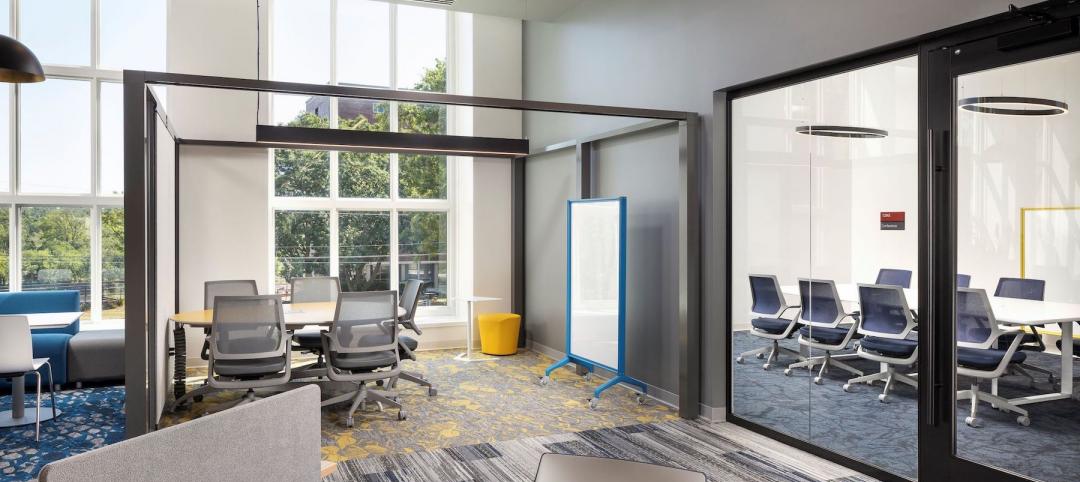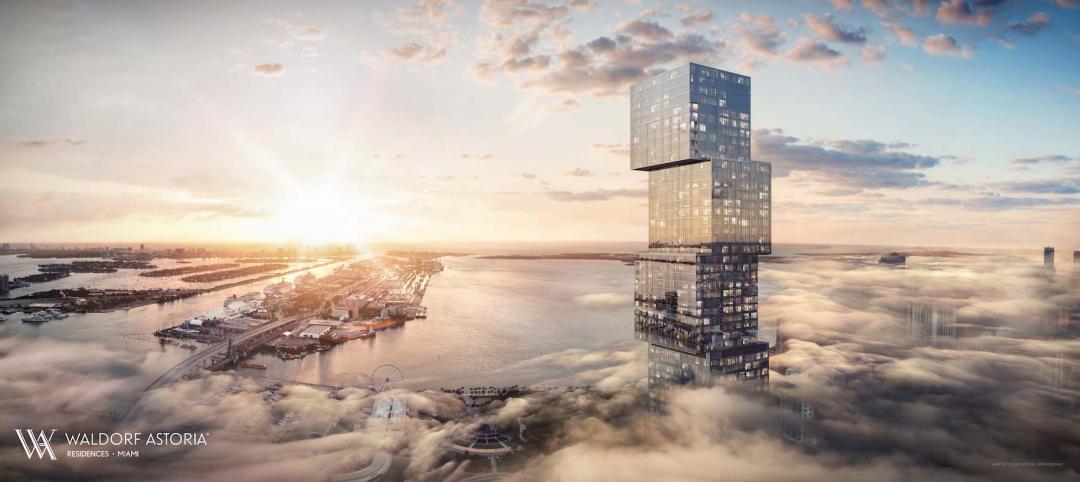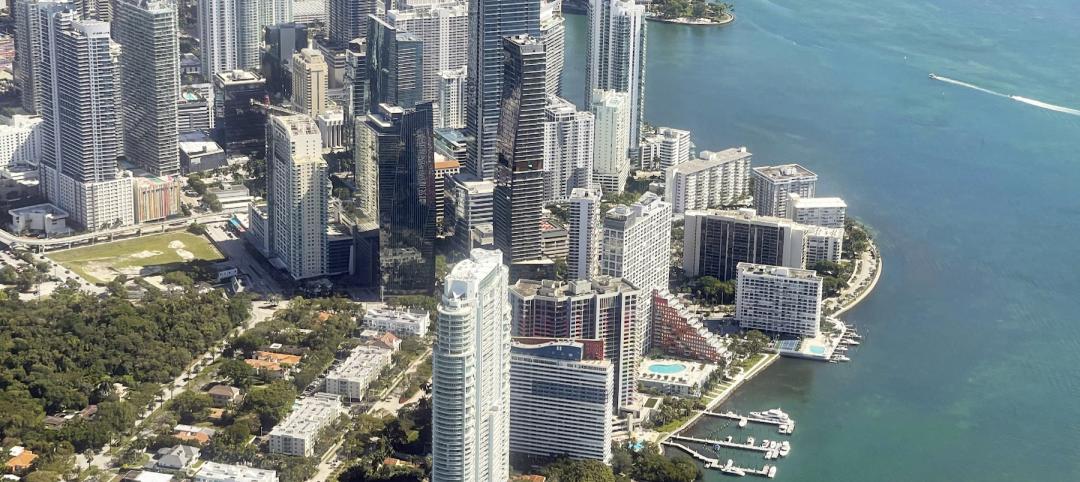What does a green building look like? How would you know one if you saw one? Maybe a trivial question to some, but of great interest to architects, designers, and other members of the Building Team as the rapid evolution of sustainable buildings continues apace.
At the recent symposium “Connect Ideas – Maximize Impact," sponsored by Transsolar Climate Engineering in Stuttgart, Germany, architect Stefan Behnisch posed the question: Where are the iconic green buildings? In his opening remarks for a panel on integrated design, Behnisch raised the point that past engineering innovations, especially in materials, often opened the way for such iconic structures as the Eiffel Tower, in the late 19th century, and the Centre Pompidou, in the late 20th. But where, he wondered, were the iconic green buildings of today?
Behnisch built his remarks around the need for a recognizable icon for green design, which he believes hasn’t yet been found, but is necessary for sustainability to be seen as a design impetus to be translated and transparent to the public.
He remarked that throughout the past 150 years, new topics have always taken over architecture and stimulated design thinking. Often this has been through the use of certain technologies or inventions. For example, structural expression began with projects such as the Eiffel Tower and eventually devolved into something architecturally iconic such as Foster + Partners’ Hong Kong Shanghai Bank headquarters tower (with Arup as engineer), completed in 1985.
Behnisch said that this trend emerged because architectural designers believed that buildings must be technically or programmatically very strong (or, I would add, preferably both), and those elements should be manifest in the design. This approach engaged directly with the public and enabled the layperson to understand the underlying nature of the building. In today’s world, steel, glass, and concrete towers try to satisfy our need for transparency in the large institutions that occupy them, to accomplish that goal.
Behnisch noted that many current buildings claim to be sustainable and, in many cases, they may save some energy. However, for most of these projects, even the LEED Platinum ones, the design itself does not directly engage the public enough to make their sustainable features apparent. Therefore, Behnisch seeks a new design language that will elevate sustainable design to the same level of architectural recognition as prior innovations, such as structural engineering technologies.
For me, that raises an interesting question: Can a sustainable building be as beautiful as the Brooklyn Bridge—or the Golden Gate—or as inspirational as the Empire State Building or San Francisco’s Transamerica Tower? If we are talking about sustainability, biophilia in design, or biomimicry in materials, should we expect any architectural expression to be as beautiful as, say, the natural beauty of a banyan tree?
Just slapping solar panels—even “building-integrated” ones, whatever that means—or wind turbines onto otherwise ordinary buildings doesn’t do the trick for me, although you could argue that these equipment add-ons could afford the public at least some idea of the building’s intent to be sustainable in energy use.
What would move you to recognize a sustainable building from one that wasn’t? What would be the architectural expression of sustainability that would be obvious to both the public and the building occupants?
For building occupants—office workers, students and teachers, health professionals—perhaps having great amounts of daylighting and movable shades would be obvious reminders that someone really thought about making a building work for the people in it.
What would be a similar gesture for passersby and other members of the public? Perhaps it’s a building with external movable shutters (such as those on the well-known Council House Two building in Melbourne), or an earth-sheltered structure that’s been burrowed into a hillside, or one with a vegetative roof or green wall. But even the lovely undulating roofs of Renzo Piano’s California Academy of Sciences in San Francisco can’t really be seen from the street.
Among larger sustainable buildings, one of the best I know of in North America that exhibits both building and urban sustainability is KPMB’s Manitoba Hydro Place. In the harsh climate of Winnipeg, this 22-story, 700,000-sf building operates in a low-energy manner, 60% below Canada’s Model National Energy Code, with high user satisfaction, while helping to regenerate the downtown core by bringing in two thousand workers a day. Viewed from the north, there’s a 22-story “thermal chimney”; from the south, a wide expanse of glass in a double-skin envelope that, to me, says “passive solar.” Inside, nearly 275 aluminized Mylar strips form a dramatic 75-foot-high water feature (conceived by KPMB with Transsolar Climate Engineering and designed by Dan Euser and the owner/architect team) that passively humidifies the air in winter and dehumidifies it in summer.
At a smaller scale, my vote would be for a building made from wood, as warm and natural a material as there is and best seen in low-rise buildings such as those by German architect (and now architecture professor at the University of Hawaii) Martin Despang (www.despangarchitekten.de)––for example, his Krogmann company headquarters in Lohne-Kroge, Germany. Since most newly constructed buildings are less than six stories in height, a well-designed wood building for me would be an obvious choice to shout “sustainable” to the public, with or without solar panels on the roof.
For an even smaller building, I visited architect Rick Joy’s office in Tucson last year. The 1,400-sf design office, whose walls are made of rammed earth, is totally cool (in both senses of the word), even in the hot desert climate of Arizona. The structure also violates a “law” of sustainable design by having daylight come in only from the north. In fact, this is a great idea in Tucson, which has temperatures above 100˚F about 20% of the year but very mild winters. This kind of technology is hardly new, of course: I built my own passive solar adobe home in northern California 30 years ago.
What would be your choice of the most iconic green building? Send your nominations to me at: jerry@greenbuildconsult.com. I’d be especially interested in hearing about larger commercial buildings, where design intentions for sustainability often have to be deciphered from a LEED Platinum award or a long case study, or via very specialized architectural reviews.
Which is the building that says “simply sustainable” to you? +
--
Jerry Yudelson is founder and president of Yudelson Associates (www.greenbuildconsult.com), a sustainability consulting firm in Tucson.
Related Stories
School Construction | May 11, 2022
New Digital Learning Commons at Rutgers supports doctoral programs in over 16 disciplines
The new Digital Learning Commons at the Rutgers University Archibald S. Alexander Library provides students in over 16 courses of study and four professional schools with spacious collaborative and study space.
Building Team | May 11, 2022
Miami to get its first supertall building
After completing its first supertall building, 111 W 57th Street in New York, developer PMG is now preparing for the groundbreaking of the first supertall in Miami: Waldorf Astoria Miami.
Sponsored | BD+C University Course | May 10, 2022
Designing smarter places of learning
This course explains the how structural steel building systems are suited to construction of education facilities.
Market Data | May 10, 2022
Hybrid work could result in 20% less demand for office space
Global office demand could drop by between 10% and 20% as companies continue to develop policies around hybrid work arrangements, a Barclays analyst recently stated on CNBC.
Multifamily Housing | May 10, 2022
Multifamily rents up 14.3% in 2022
The average U.S. asking rent for multifamily housing increased $15 in April to an all-time high of $1,659, according to Yardi Matrix.
Headquarters | May 10, 2022
JPMorgan Chase’s new all-electric headquarters to have net-zero operational emissions
JPMorgan Chase’s recently unveiled plans for its new global headquarters building in New York City that is rife with impressive sustainability credentials.
Building Team | May 9, 2022
Cincinnati’s Andrew J Brady Music Center transforms the city’s riverfront
In Cincinnati, Ohio, the Andrew J Brady Music Center aims to connect audiences with live music while transforming Cincinnati’s riverfront.
Sponsored | Multifamily Housing | May 8, 2022
Choosing the right paver system for rooftop amenity spaces
This AIA course by Hoffmann Architects offers best practices for choosing the right paver system for rooftop amenity spaces in multifamily buildings.
Market Data | May 6, 2022
Nonresidential construction spending down 1% in March
National nonresidential construction spending was down 0.8% in March, according to an Associated Builders and Contractors analysis of data published today by the U.S. Census Bureau.
Building Team | May 6, 2022
Atlanta’s largest adaptive reuse project features cross laminated timber
Global real estate investment and management firm Jamestown recently started construction on more than 700,000 sf of new live, work, and shop space at Ponce City Market.














